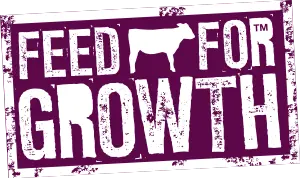Feeding Success Stories


Agriland launches series on 'Feeding Success' with Volac Milk Replacers Ireland
Agriland Media Group is delighted to team up with Volac Milk Replacers Ireland Ltd for the ‘ Feeding Success Stories Series’, which will look at how high-quality calf nutrition has helped farmers make calf rearing more efficient.
Feeding the pre-weaned calf correctly during the crucial first weeks of life pays off handsomely.
Indeed, the milk feeding period is a golden opportunity to maximise growth – get the foundations right and you will prime your growing heifers for a highly productive milking future when they enter the adult herd.
Discover how high-quality Feed for Growth calf nutrition has paid off handsomely on four different farms as, over the next four weeks, real-life farm scenarios are explored through which some easy-to-implement methods are highlighted that could make your calf rearing more efficient.
Week 1: Featuring Jerry Moloney, Co. Tipperary, who discusses how to deliver healthier, faster-growing calves.
Week 2: Featuring Tommy Relihan, Co. Limerick, explaining how his family has approached calf nutrition over the decades.
Week 3: Featuring Padraig Smith, Co. Cavan, who highlights his approach to producing high-performance calves.
Week 4: Featuring James McGee, Co. Donegal, who will look at boosting weight gains during the early weeks of calf rearing.
Ensuring your rearing system is tailored to your needs combined with remembering the basics and consistent practices will pay dividends on your calf rearing enterprise.
Adequate body weight heifers – reared correctly and calving down for the first time at 24-months-of-age – will have better fertility, produce more milk, have better udder health, and have the best survival rates as adult milkers.
Sales Manager from Volac Milk Replacers Ireland, Una Hickey said: “All of these valuable traits drive lifetime daily yield.
“And it's the animals with the highest lifetime daily yields that are going to be the most profitable contributors to your milk production business.”
Una explains that a heifer calf’s relative ability to turn nutrients into growth peaks during the early life milk feeding period, so you simply must take maximum advantage using a high-quality calf milk replacer based on either concentrated whey protein, or one based on a high level of good quality skim (>50% inclusion).
“The efficiency with which the calf turns feed into growth is at its maximum early on – dropping from 50% in the first weeks of life to only 10% at first breeding. So make the most of this window of opportunity,” she stressed.
Correct milk feeding levels in early life also improve calf growth and health, as well as programming the rapidly growing pre-weaned young dairy animal for better performance when it enters the milking herd.
According to Una: “Your milk feeding regime should also encourage early solid starter feed intake to ensure good, follow-on growth rate post weaning.
"We also encourage all calf rearers to monitor performance too – and if you are always first breeding your heifers at 55-60% of their mature body weight, at 13-14 months-of-age, you are well on the right track towards a more sustainable dairy farming system.
“Provided your colostrum management and feeding protocol is sound – and your calves are housed in a hygienic, well-ventilated environment with access to fresh water, roughage and a palatable starter concentrate – we know that feeding a good heifer calf up to 900g (750g minimum) of calf milk replacer daily up until weaning allows it to meet ideal rearing targets, whilst also allowing optimal rumen development.
“The peak milk allowance (6-8L/day in maximum 3L feeds) should be reached by two weeks-of-age. Indeed, these feeding levels are crucial if you want to calve heifers down with an adequate body size at 24 months.”
However, Una stresses that in cold weather you need to feed even more milk.
“A cold calf must divert milk energy away from growth towards keeping warm and possibly even to fight off a disease challenge.
"It is therefore important to feed enough milk during the colder months. Indeed, for a calf less than three-weeks-old, you need to step up the level of milk solids by 100g per day for every 10°C drop in temperature below 20°C.
"For example, if the outside temperature is 10°C, feed an extra 100g of milk powder per day. This can be achieved by either increasing the volume fed, or by increasing the mixing rate,” she said.
Feed for Growth promotes efficient and sustainable youngstock rearing practices.
High-quality nutritional solutions from Volac Milk Replacers Ireland Ltd are scientifically formulated to ensure optimal rumen development.
In addition, personalised, technically validated support from local experienced field-based advisers will help farmers achieve outstanding outcomes.
Led by National Sales Manager Una Hickey – and drawing on support from experienced regional team leaders Liam Gannon and JP Harkin – the three Feed for Growth local Business Managers David Whyte, Sharon O’Donoghue, and Tomas O’Reilly remain focused on delivering highly practical calf rearing advice to dairy farmers across Ireland.
